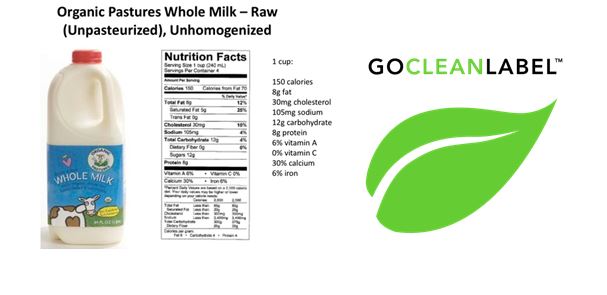Scan any packaged food item and you’re likely to be bombarded with various labels touting the food inside. Certified Organic, Non-GMO, hormone-free, gluten-free and others can sometimes leave you feeling like you need a PhD in labeling laws to decode what they all mean. Now, a new slew of food labels has entered the market, which may further add to the confusion. Here’s what you need to know about each:
Certified R.A.W. and C.L.E.A.N.
R.A.W. stands for real, alive and whole; describing both plant foods and animal foods- if they’ve been humanely harvested. R.A.W. foods are 100% free from GMO’s, with most of the ingredients also being organic.
To use the R.A.W. label, a food needs to be processed below 212 degrees (or not processed at all) to keep intact as many enzymes as possible. Raw foodies believe that keeping foods in this state preserves the bioavailability of vitamins, minerals and other phytonutrients.
Additionally, R.A.W. labeled foods must be produced in a facility that has a HACCP plan in place. HACCP, or hazard analysis critical control point, is food industry lingo for a standard way of producing food that minimizes biological, chemical and physical risks. While most food companies already have these standards in place, it’s assurance to consumers that even small shops are confirming their ‘raw’ foods are safe to eat.
C.L.E.A.N stands for conscious, live, ethical, active and nourishing. It’s similar to the above R.A.W. label except it doesn’t require an upper limit of 212 degrees F.
Natural
From a food science perspective, it is difficult to label a processed food as ‘natural’ as even minimal processing will change the structure and is therefore no longer the natural product of the earth. Therefore, the FDA has no formal definition for the term natural, though that will likely change in coming years. That said, the agency has not objected to using the term natural if the food does not contain any added color, artificial flavors or synthetic substances.
Seeing the natural label on foods doesn’t address any food production methods or absence of pesticides, pasteurization, irradiation and the like though it does mean that nothing artificial or synthetic has been added to the food that would not normally be expected in it.
Certified Transitional
One of the downsides in gaining a certified organic label is that the process takes three years and can be too costly for smaller farms and companies. It’s why roughly 1% of U.S. farms are certified organic, even though organic demands continue to grow at a rapid rate.
Certified transitional identifies farms and foods that are in the process of becoming certified organic. It lets consumers know they they are using organic farming practices, even if their land is not fully organic yet. Instead of the traditional requirement that the farmland needs to be free from synthetic pesticides and fertilizers for three years, transitional farms only need to be free for one. Then, after two additional years being certified transitional, farms can become certified organic.
While this label is still fairly new to the market, it’s estimated that this label will increase in popularity in the years to come as the demand for organic items continues to grow.









